Table of Contents
ToggleIn the bustling world of business, understanding product costs can feel like deciphering a secret code. It’s not just about slapping a price tag on an item and hoping for the best. A solid product cost analysis is like the GPS for your financial journey—guiding you through the twists and turns of expenses, margins, and profits.
Understanding Product Cost Analysis
Product cost analysis examines all costs associated with creating a product. This includes direct costs like materials and labor, as well as indirect costs like overhead.
Definition of Product Cost Analysis
Product cost analysis identifies and summarizes the total expenses incurred in developing a product. It encompasses fixed costs, which remain constant regardless of production volume, and variable costs, which fluctuate with production levels. By calculating these costs, businesses gain insight into profitability and pricing strategies, helping stakeholders make informed decisions.
Importance in Business
Analyzing product costs plays a crucial role in business success. Accurate cost analysis helps set competitive prices while ensuring profit margins meet acceptable levels. Understanding product costs aids in optimizing resource allocation, enabling businesses to reduce waste and improve efficiency. Additionally, it informs budget planning and financial forecasting, equipping companies to better navigate market changes. Ultimately, effective cost analysis drives strategic decision-making and promotes sustainable growth.
Key Components of Product Cost Analysis
Understanding the components of product cost analysis is essential for effective financial management. A comprehensive analysis ensures businesses recognize all expenses tied to product creation.
Direct Costs
Direct costs encompass expenses that can be directly linked to the production of a product. Common examples include raw materials, labor, and specific manufacturing supplies. These costs remain closely tied to production volume, meaning they increase with higher output levels. For instance, if a company produces more units, it incurs greater expenses for materials and labor accordingly. Analyzing direct costs allows companies to pinpoint areas where they can reduce spending, thereby enhancing overall profitability.
Indirect Costs
Indirect costs, in contrast, refer to expenses that cannot be traced directly to a single product. These often include rent, utilities, and administrative salaries. These costs tend to remain stable regardless of production levels but still contribute significantly to overall expenses. Firms can classify indirect costs as fixed or variable, further aiding in financial analysis. For example, while rent remains constant, utility costs might fluctuate based on usage. Understanding indirect costs supports effective budgeting and resource allocation, which is vital for sustaining growth.
Methods of Product Cost Analysis
Understanding methods of product cost analysis enhances a business’s ability to manage expenses effectively. Two key methods include variable costing and absorption costing.
Variable Costing
Variable costing focuses on costs that change with production level. This approach includes direct materials, direct labor, and variable overhead in total product cost calculations. Since fixed costs aren’t assigned to products, it simplifies decision-making related to pricing and profitability. For instance, if production increases, costs like materials and labor will rise, but fixed overhead remains unchanged. Businesses benefit by analyzing which products cover their variable costs adequately. Moreover, this method helps identify the contribution margin, indicating how much revenue contributes to covering fixed costs after variable expenses are deducted.
Absorption Costing
Absorption costing allocates all manufacturing costs to products, including both fixed and variable costs. By including fixed overhead in product costs, the method offers a comprehensive view of total expenses. This approach is essential for external financial reporting where Generally Accepted Accounting Principles (GAAP) are followed. Analyzing costs through absorption costing can result in higher inventory values and profit levels, depending on production volume. If production exceeds sales, absorbed costs remain in inventory, affecting net income reporting. Thus, comprehension of absorption costing supports long-term profitability strategies, reflecting a more detailed financial picture for stakeholders.
Tools and Techniques for Product Cost Analysis
Effective product cost analysis relies on various tools and techniques that enhance understanding. Utilizing appropriate software can streamline processes and provide valuable insights.
Software Solutions
Numerous software solutions exist specifically for product cost analysis. Applications like QuickBooks, SAP, and Oracle provide functionalities tailored to managing costs. These platforms offer features for tracking expenses, generating reports, and facilitating efficient budgeting. Users benefit from automated calculations that reduce the potential for errors. Real-time data access supports informed decision-making, allowing businesses to adjust strategies promptly. Integrating these tools into operations simplifies the analysis process.
Data Analysis Techniques
Different data analysis techniques play a critical role in accurate product cost evaluation. Utilizing methods such as variance analysis assists in identifying discrepancies between expected costs and actual expenses. Businesses may also employ trend analysis to detect patterns over time, helping to forecast future costs. Cost-volume-profit analysis helps determine how changes in production levels impact overall profitability. By applying these techniques, companies enhance their ability to make strategic decisions. Knowing specific cost drivers allows for more precise management of resources and investments.
Challenges in Product Cost Analysis
Product cost analysis presents various challenges that can hinder accurate assessment and decision-making. Recognizing these issues is essential for effective management.
Common Pitfalls
Many businesses mistakenly overlook indirect costs during analysis. Failing to account for these expenses can lead to underestimating total product costs. Complexity often arises from inaccurate data collection methods, which can skew results. Some companies rely on outdated software that doesn’t provide real-time insights, affecting decision-making. Inconsistent methods between departments further complicate evaluations. Each of these pitfalls contributes to inefficient resource allocation and missed opportunities for cost savings.
Overcoming Obstacles
Overcoming challenges in product cost analysis requires adopting best practices. Implementing robust software solutions allows for better tracking of expenses. Regular training sessions for employees ensure that everyone understands cost analysis methods. Establishing a standardized process for data collection helps maintain consistency across departments. Creating a culture of transparency encourages teams to share information more openly. In these ways, businesses can significantly enhance their product cost analysis efforts and improve overall profitability.
Product cost analysis is essential for any business aiming for financial health and sustainable growth. By thoroughly understanding both direct and indirect costs, companies can make informed decisions that enhance profitability. Utilizing effective methods like variable and absorption costing provides a clearer financial picture, while advanced software tools streamline the analysis process.
Addressing common challenges in product cost analysis can lead to improved resource allocation and cost-saving opportunities. Companies that prioritize accurate data collection and foster a culture of transparency are better positioned to navigate the complexities of product costs. Ultimately, mastering product cost analysis empowers businesses to optimize pricing strategies and drive long-term success.




